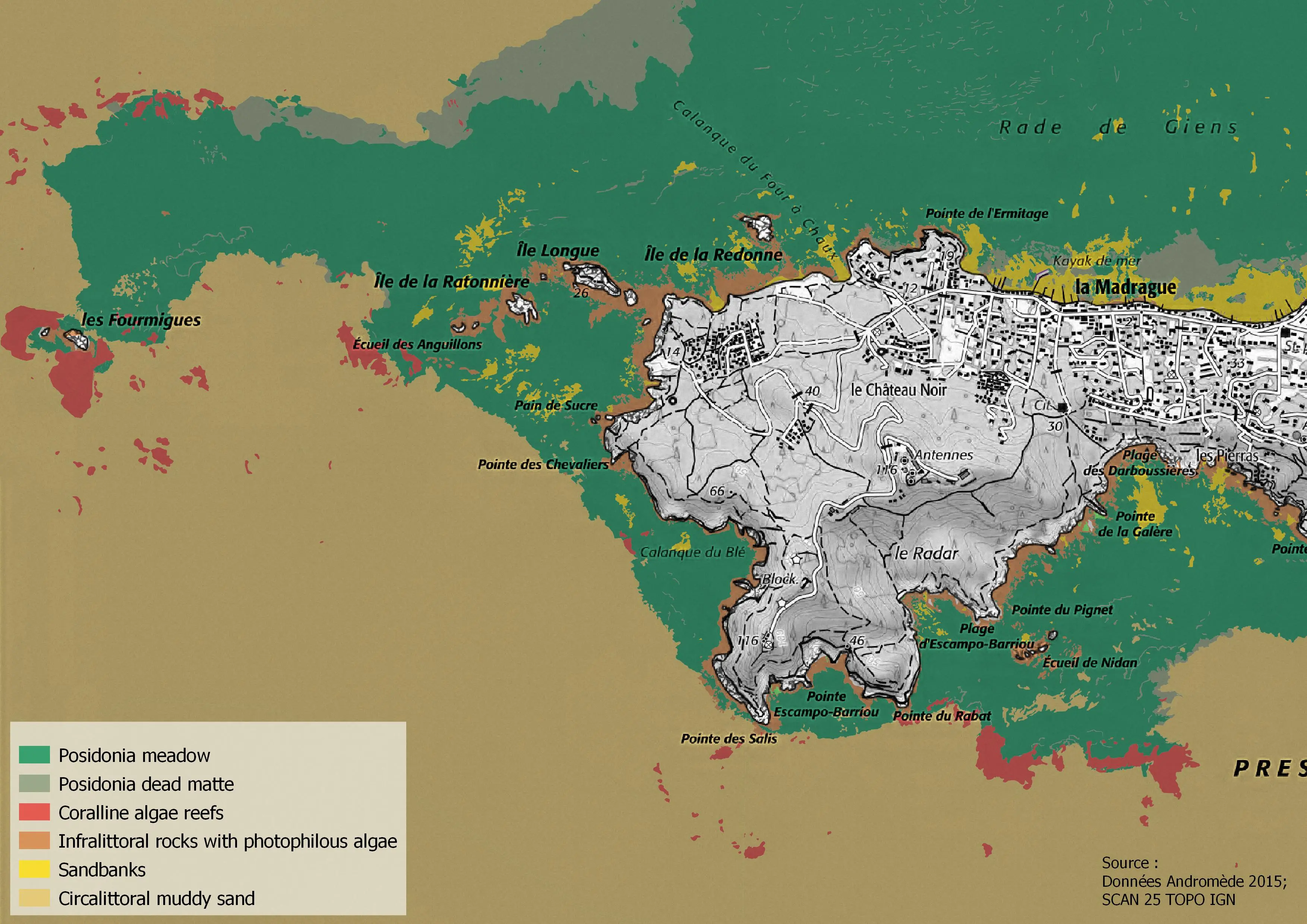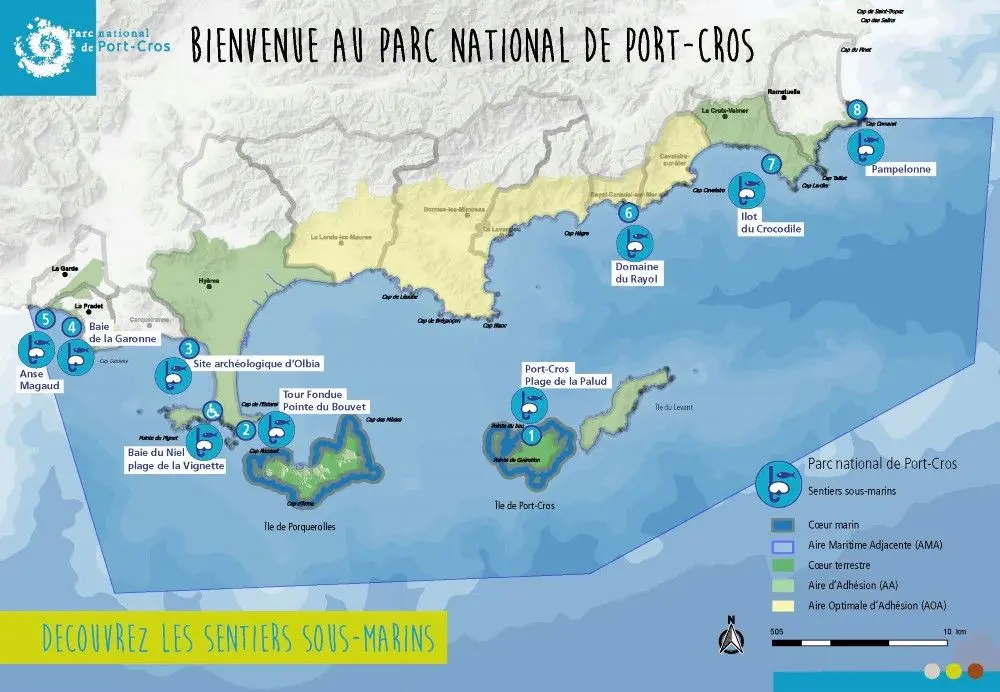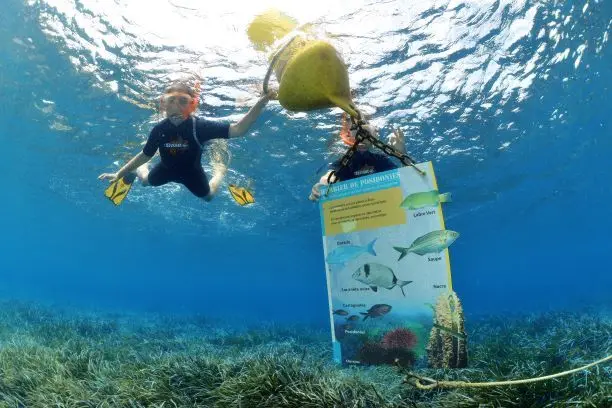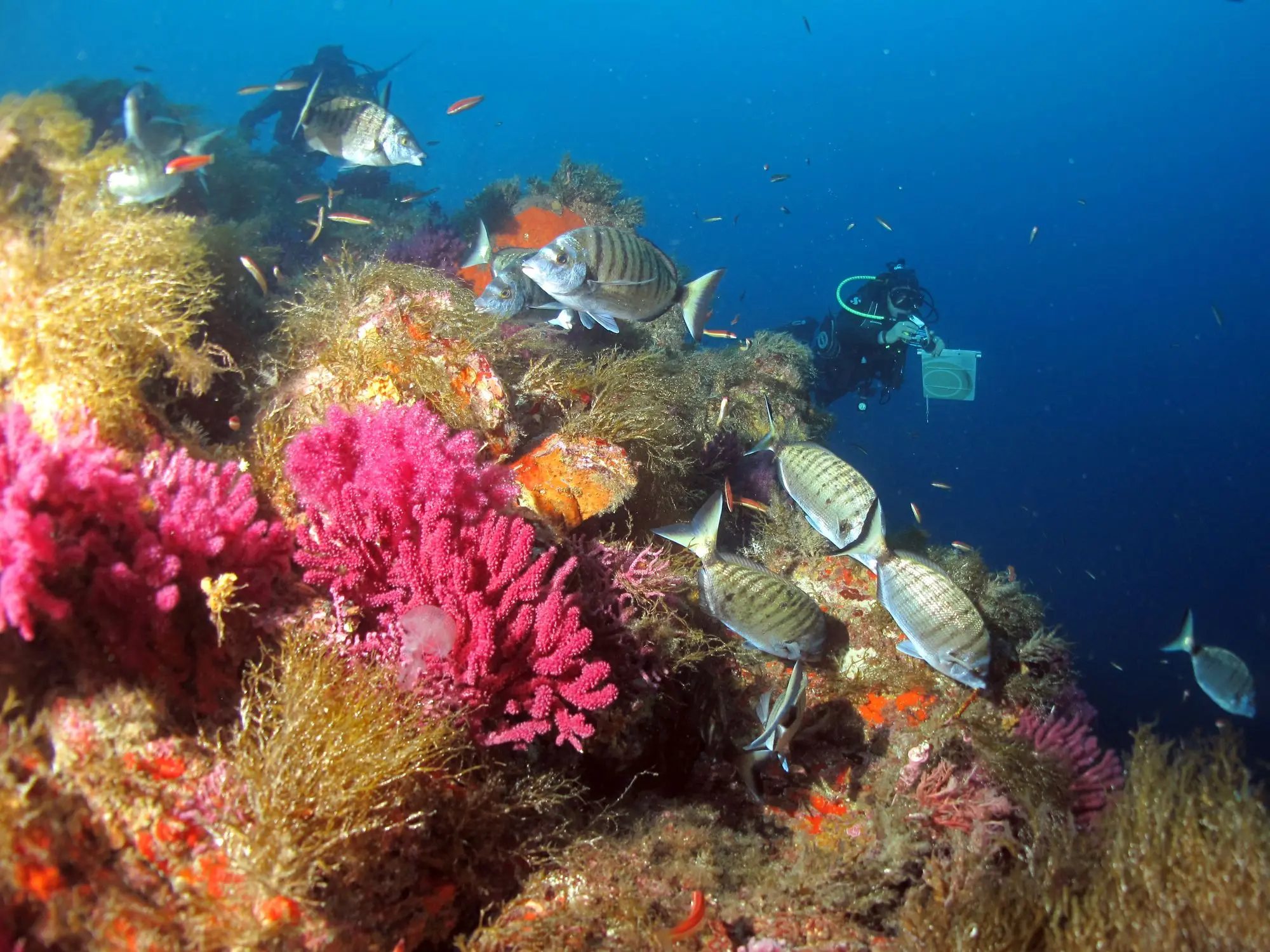Where to dive?
The topography of the Port-Cros National Park is ideal for diving. The diversity of habitats offers a wide range of landscapes for divers of all levels, where they can explore typical Mediterranean ecosystems. As well as the coastlines of Port-Cros and Porquerolles and the most famous shipwrecks, the National Park offers access to lesser-known but equally attractive sites.
The main habitats in the area
- Posidonia meadow
- Coralline algae reefs
- Infralittoral rocks with photophilous algae
- Semi-dark caves
- Sandbanks

Dive sites
- Diving prohibited
- Diving prohibited from 1st April to 30th Septembe
- Diving prohibited from 1st April to 30th October
- Docking, mooring and disembarking prohibited
- Anchoring prohibited except at mooring facilities for dive vessels
- Diving subject to authorisation
Dive site (natural)
Dive site with mooring (natural)
Suggested dive site (natural)
Dive site (wreck)
Dive site with mooring (wreck)
Suggested dive site (wreck)
Partner organisation
Who should you dive with in Port-Cros National Park?
• Choose a partner organisation.
Shipwrecks
The seabed around the islands of Porquerolles and Port-Cros bears traces of the past, dating from Antiquity to the 20th century.
Several wrecks of trading ships and isolated archaeological remains bear witness to the intense commercial activity that has existed between Mediterranean civilisations since ancient times. The most experienced divers can spend hours exploring.
- Shipwrecks in the waters of Port-Cros National Park.
- The PALM atlas by DRASSM.
The National Park’s network of underwater trails

Nine at La Garde, Le Pradet, Le Rayol, Hyères, Ramatuelle, and La Croix Valmer are managed in partnership with the Port-Cros National Park. See the underwater trails brochure.

